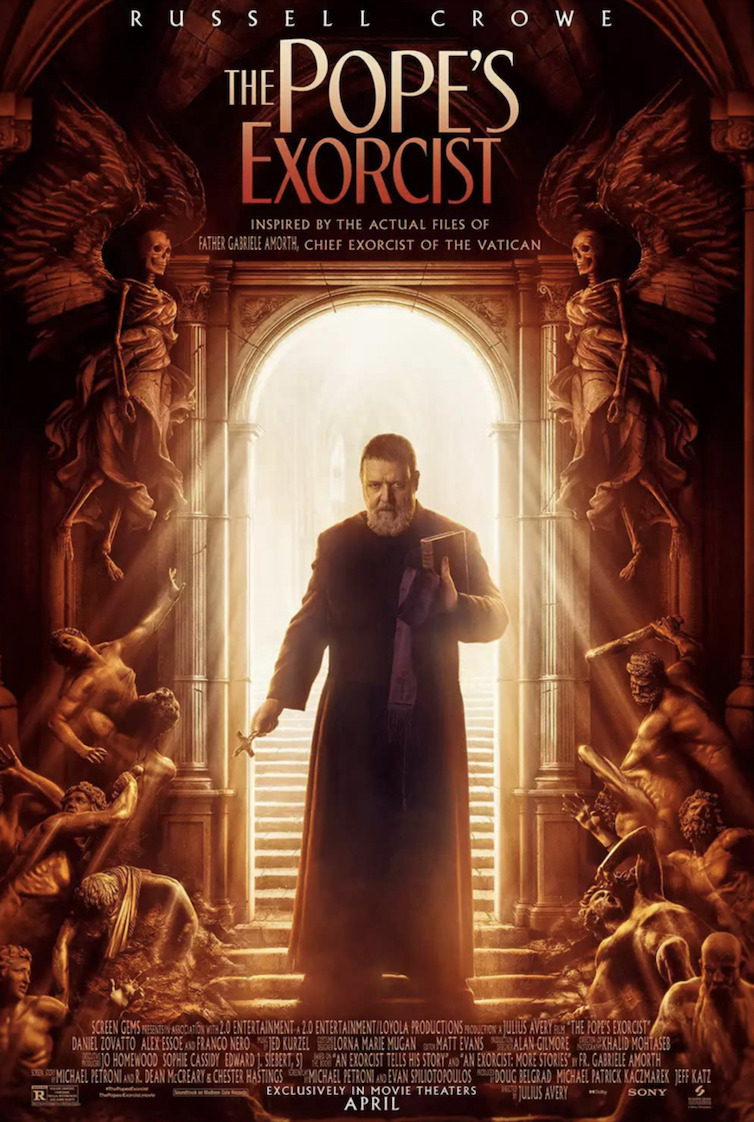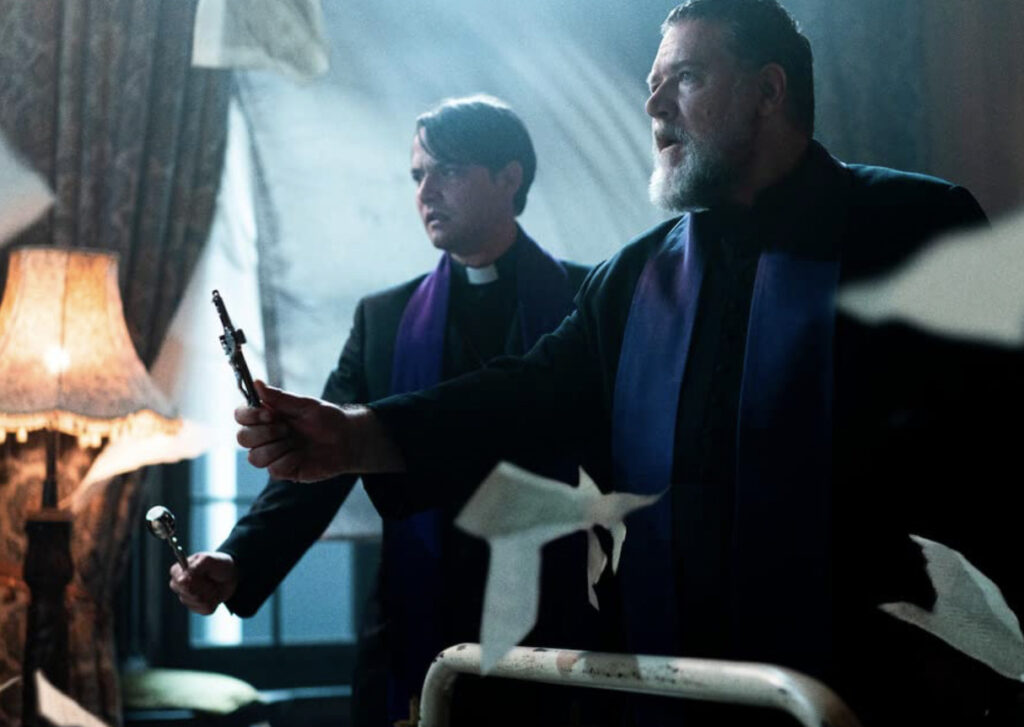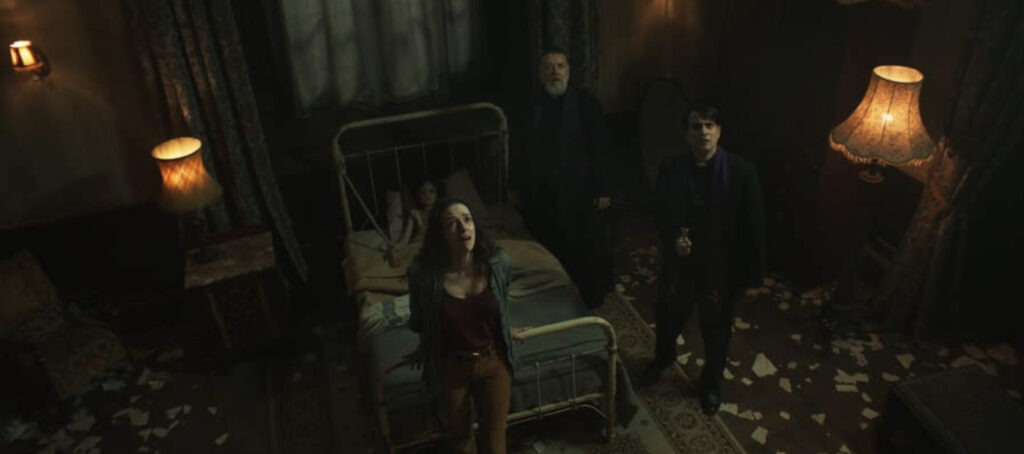
Bringing historical figures to life on screen, despite the exaggerated scenarios they find themselves in throughout a film’s plot, has become a signature move for Russell Crowe. After being nominated for an Oscar for for his portrayal of mathematician John Nash in A Beautiful Mind, the actor is once again tackling the real-life story of a notable figure in his latest movie, The Pope’s Exorcist.
The new supernatural horror film chronicles the work of the late Father Gabriele Amorth, who was one of the the most famous exorcists in the Catholic Church in recent history. The Italian Catholic priest served as the exorcist of the Diocese of Rome for the last 30 years of his, between 1986 until his death in 2016 at the age of 91.
The Pope’s Exorcist was written by Michael Petroni and Evan Spiliotopoulos, who based the screenplay on Amorth’s memoirs, An Exorcist Tells His Story and An Exorcist: More Stories. The screen adaptation was directed by Australian filmmaker Julius Avery, who garnered acclaim for helming the 2018 alternate history action horror feature, Overlord.

The Pope’s Exorcist is set right after Father Amorth was appointed as the exorcist of the Diocese of Rome in the mid-’80s. The drama introduces the priest as he attends to a supposedly possessed boy in a rural Italian village. Amorth is informed by a local priest that the boy shows all the classical signs of possession, including a sudden command of English. However, Amorth determines that the boy isn’t possessed but contending with mental illness, like most of his cases.
The priest later shares his findings to the Vatican tribunal, who are skeptical of his methods and wish to remove him from his position as exorcist of the Diocese of Rome. However, he convinces them to allow him to keep his post, as he knows that demonic evil really does exist and occasionally surfaces.
That evil surprisingly emerges in a derelict abbey in Castile, Spain. A recently widowed American mother, Julia (Alex Essoe), brings her two children – the sullen teenager Amy (Laurel Marsden) and sensitive pre-teen Henry (Peter DeSouza-Feighoney), who hasn’t spoken since witnessing his father’s horrific death – to the abbey. Due to his vulnerabilities, Julia’s son becomes an instant target for the evil lurking within the house.
Now in desperate need of saving and protecting her children, particularly Henry, Julia seeks the help of local Spanish priest Esquibel (Daniel Zovatto). Needing further assistance, Esquibel contacts the Vatican, and the Pope (Franco Nero) sends Amorth to Castile. After researching the abbey and battling his own personal demons, Amorth sets out to save Henry’s life with the help of Esquibel and the boy’s family.

Despite the film having two screenwriters and a plethora of written resources about Amorth’s experiences as the exorcist of the Diocese of Rome, including his two memoirs, the screen adaptation about his life unfortunately offers generic character development. The movie’s main cast makes a gallant effort to infuse their characters with ever evolving and layered emotions, but the characters’ limited backstories often fail to make the protagonists fully relatable and realistic.
Julia is presented as a devoted mother who wishes to provide a better life for her children after their father’s tragically dies. But she predictably proves to be too focused on fixing up her late husband’s family abbey to initially realize that the very house that’s supposed to help them financially is actually putting Amy and Henry in danger.
The children, meanwhile, are expectedly too upset with their mother for drastically changing their lives again. Even when they immediately sense a dangerous presence in the house after they first move in, they have too much teen angst to tell her the real reason behind their unease with the abbey, in a classic horror genre cliché.

Despite the largely one-dimensional character and story development featured in The Pope’s Exorcist, the project still thrives in its largely visually spectacular designs. The drama’s production designer, Alan Gilmore, crafted beautiful Gothic designs for the story’s main locations, from the family’s abbey in Castile to the churches of the Vatican. The film’s grand set designs serve as a reminder that despite the hidden evil that lurks within a location, there’s always hope that goodness can still glimmer and prevail.
Gilmore’s magnificent production design was brilliantly captured by ‘The Pope’s Exorcist’s Director of Photography, Khalid Mohtaseb. The cinematographer impressively captured the performers and locations in dark, brooding and gritty shades of green and gold.
Mohtaseb also expertly captured the daring stunts Crowe and his co-stars engaged in as Amorth fought back against the demon that has taken complete control over Henry. The actor fully immersed himself in his character’s gravity-defying physicality and action sequences. Some of the most notable scenes involve Amorth provoking the demon possessing Henry to transfer itself into his body, and exploring and trying to expel the evil that’s also trapped within the abbey’s basement.
While The Pope’s Exorcist offers offers scant character growth and conventional story development throughout its runtime, Crowe’s expert experience in playing protagonists in historical period movies helped drive the supernatural thriller. Combined with Gilmore’s elegant production design, Mohtaseb’s striking cinematography and the performers’ enthralling stuntwork, all under the direction of talented historical horror filmmaker Avery, overall the new drama is a stellar addition in the genre.
Grade: B+
Sony Pictures Releasing is distributing The Pope’s Exorcist in theaters today, Friday, April 14.
Check out more of Karen Benardello’s articles.
Here’s the trailer of the film.

